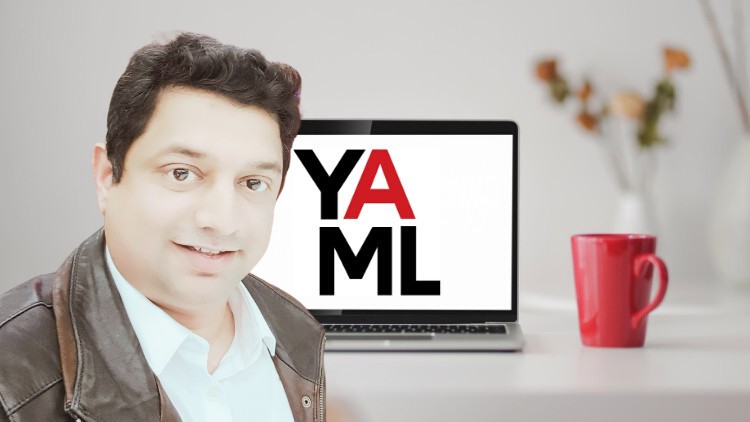
Learn basic concepts, syntax, data types, key features, and capabilities of YAML data serialization language.
What you will learn
What is YAML?
Overview of YAML data serialization language and its benefits
Overview of various use cases of YAML
Building a deep understanding of YAML’s syntax and its supported data types
Using simple and complex data types of YAML to model data
Generating powerful structures using nested containers
Ability to create, understand and maintain structured data using YAML data format
Working with anchors in documents
Usage of advanced features of YAML
Various tools for creating YAML effectively
Description
In this course, you will run through a comprehensive overview of the YAML data serialization language and its syntax. You will also cover the basic concepts behind this language, understand its main features, and the capabilities of YAML.
This course is for Software Engineers, Full Stack Web Developers, DevOps Engineers, Software Architects, Managers, and Hobbyists; wondering what YAML is?
Every software engineer looking to create structured data in a compact and human-readable format should learn YAML. YAML is a key technology for creating complex configurations in various modern technologies related to automation, testing, containerization, AWS/Azure/GCP cloud deployment, DevOps, etc. This course covers YAML in its entirety in a very to-the-point manner.
After taking the course you would be adding YAML to your skillset in less than an hour. You will have a great new skill that is transferable and highly applicable. This course is aimed at software engineers of all levels, from beginner to advanced, who want to get updated with YAML syntax.
Learning Objectives for this course are:
- What is YAML?
- The basic syntax of YAML
- Primitive data types in YAML
- Complex data types
- Advance features of YAML
- Comparison of YAML with other popular data formats like JSON and XML
- Representing data using YAML
- Different styles and Special features of YAML
- Tools and Technologies leveraging YAML data serialization format
- Creating and validating YAML
Buying this course entitles you to all future updates.
This course is aimed at software engineers of all levels, from beginner to advanced, who want to get up to date with YAML syntax. There are no prerequisites for taking this course. However, basic knowledge and familiarity with HTML, XML, and JSON would be helpful.
The course is backed by carefully designed quizzes and engaging exercises. In addition, this course also contains video lectures, reading materials, associated presentations, source codes, and references to the latest tools, frameworks, and libraries related to YAML.
After completing this course you would also earn a YAML certificate to add to your LinkedIn profile, resume, or personal website.
Testimonials
Check out what existing students have to say about the course:
>> Amazing Course Nicely explained. Very helpful for beginners to learn easily from basics and get expertise. The core topics are covered in-depth step by step with live examples and all fundamentals concepts, I truly enjoyed learning this course very informative highly recommended to everyone, waiting eagerly to learn more topics Thanks Tarun Telang wish you all the best..!!!
>> Hi Tarun, I think you have covered everything required. I was not aware of YAML before and now when I am studying AWS cloud formation then I realized the content you have covered is very much useful. Thanks for the course.
>> Great course on Yaml
>> The simplicity with which the trainer has explained this topic is very appreciable. even a beginner can understand it very well with clarity. I very much liked the comparison used among JSON, XML, and YAML to explain the concepts, which helped me to understand the context of YAML Usage.
>> Good coverage for what I needed.
>> very well explained
>> Thorough overview of YAML.
Content